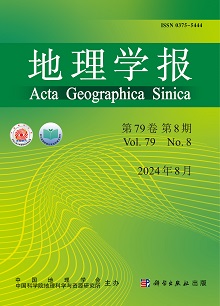Soil salinization prediction through feature selection and machine learning at the irrigation district scale
Xie, Junbo , Shi, Cong , Liu, Yang , Wang, Qi , Zhong, Zhibo , He, Shuai , Wang, Xingpeng
2025-01-06 null null 12(卷), null(期), (null页)
Introduction Soil salinization is a critical environmental issue affecting agricultural productivity worldwide, particularly in arid and semi-arid regions. This study focuses on the Xinjiang region of China, specifically the Xiao Haizi and Sha Jingzi irrigation areas, to explore the use of remote sensing technology for surface soil salinity estimation.Methods Exhaustive and filter-based feature selection methods were employed by integrating soil salinity data measured on the ground with 32 spectral features derived from Landsat 8 OLI remote sensing images. A 5-fold cross-validation method was used to identify feature combinations that resulted in higher R 2 values. Moreover, the inversion accuracy of soil salinization monitoring models built using different feature combinations was compared across five machine learning algorithms: Support Vector Machine (SVM), XGBoost, Decision Tree (DT), Random Forest (RF), and AdaBoost.Results The results revealed that: (1) The AdaBoost and DT algorithms demonstrated high efficacy and precision in the prediction of soil salinity, with AdaBoost outperforming other algorithms in the validation set (R 2 value of 0.892, MAE of 1.558, RMSE of 2.043), and DT showing the best performance in the training set (R 2 value of 0.917, MAE of 0.838, RMSE of 1.182). (2) Feature combination 3, consisting of Salinity Index 5, Salinity Index 1, and Salinity Index 8, not only effectively extracted soil salinity information but also significantly improved the accuracy and efficiency of model estimations, effectively reflecting the actual situation of soil salinization in the irrigation area.Discussion This research provides robust methodological support for using remote sensing technology for soil salinity monitoring and management.
相关推荐
- Ultrawhite structural starch film for sustainable cooling [2025-01-06]
- Microtopography Affects the Diversity and Stability of Vegetation Communities by Regulating Soil Moisture [2025-01-06]
- Low-Frequency Sweep Design-A Case Study in Middle East Desert Environments [2025-01-06]
- Light Use Efficiency Model Based on Chlorophyll Content Better Captures Seasonal Gross Primary Production Dynamics of Deciduous Broadleaf Forests [2025-01-06]
- Urban green spaces enhanced human thermal comfort through dual pathways of cooling and humidifying [2025-01-06]



